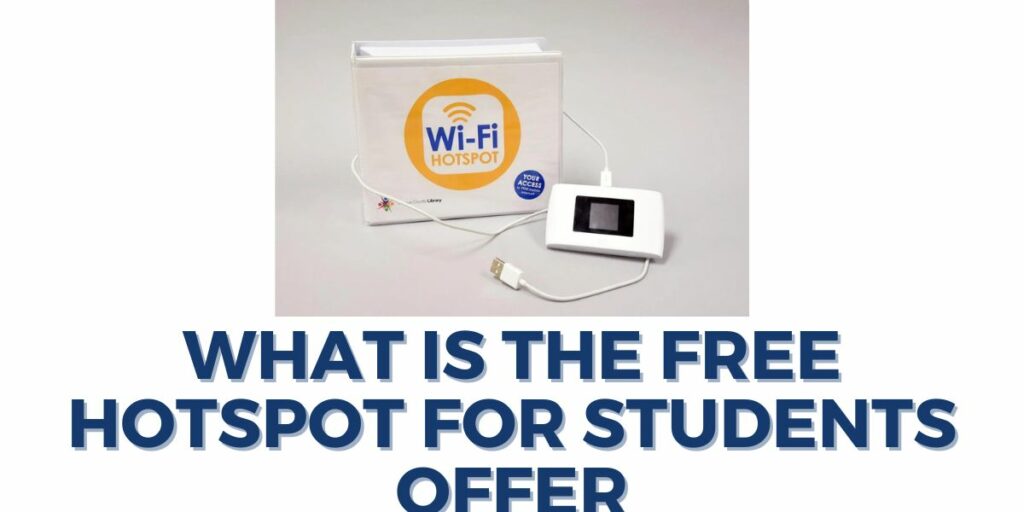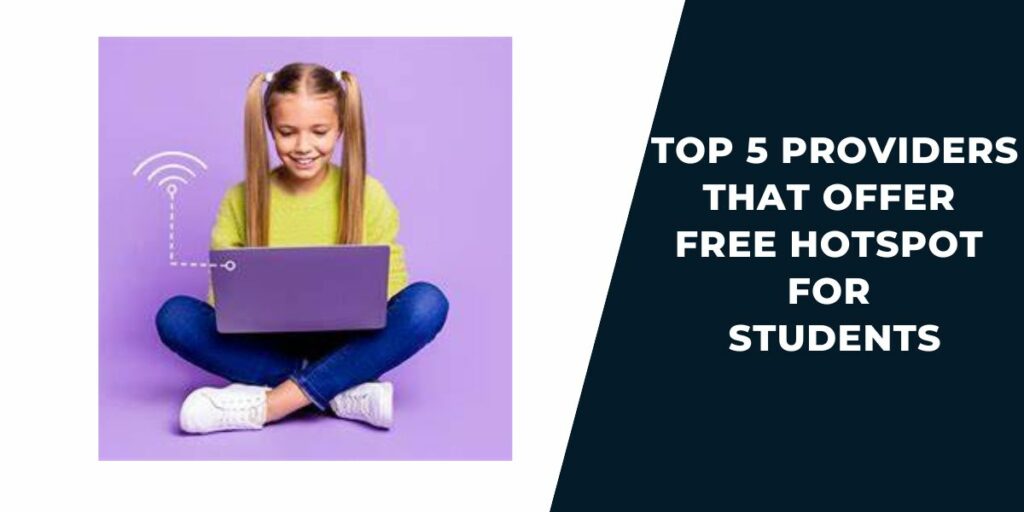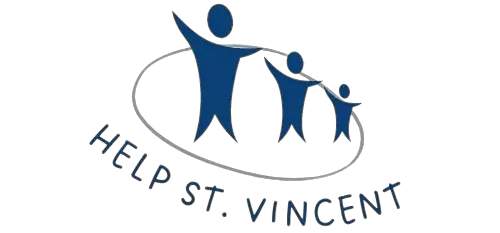Free Hotspot for Students (2025): Top 5 Providers & How

Ah, the student life – filled with late-night study sessions, cramming for exams, and surviving on a tight budget, I remember my greatest savior was stumbling upon a free Wi-Fi hotspot.
So, fellow students, I’ve got your back!
In this blog post, we’ll explore some of the best free hotspot for students, making your academic journey a little easier and more connected.
What is the Free Hotspot for Students Offer?

Free Hotspot for Students Offer is an initiative offered by schools, non-profit organizations, or government agencies. They provide eligible students with free mobile hotspots. It is usually free of charge to help them access the internet from anywhere, at any time.
This program is often designed for students who do not have reliable internet access at home, making it difficult for them to participate in online learning and complete their coursework.
Are you in need of a computer as a homeschooler? Check out my blog post on Free Computers for Homeschoolers for steps to get one.
Top 5 Providers that Offer Free Hotspot for Students

These are the top 5 providers that offer free hotspots for students:
1. T Mobile
T Mobile’s Project 10Million is a program that aims to provide free internet access and mobile hotspots to 10 million eligible households with students over the next five years.
The program is open to families with children participating in the National School Lunch Program and available in all 50 states and Puerto Rico. Eligible households can receive one free hotspot per student and 100GB of data annually.
Do you know you can also get a free iPad from T Mobile? Check my T Mobile Free iPad post for how to go about it.
2. Verizon
Verizon’s Innovative Learning Schools program provides free mobile hotspots and internet access to students and teachers in Title 1 schools across the United States.
The program also provides technology and teacher training to help schools integrate technology into the classroom. Eligible households can receive one free hotspot per student and 30GB of data per month.
3. AT&T
AT&T’s Access from AT&T program offers discounted internet and free Wi-Fi hotspots to eligible households with at least one resident who participates in the Supplemental Nutrition Assistance Program (SNAP) or the National School Lunch Program (NSLP).
The program is available in 21 states and the District of Columbia. Eligible households can receive a discounted monthly rate for internet and one free hotspot.
4. Comcast Xfinity
Comcast’s Internet Essentials program offers low-cost internet and a subsidized computer to eligible households with at least one child who receives free or reduced-price school lunches.
The program also offers free Wi-Fi hotspots to all Internet Essentials customers. Eligible households can receive a discounted monthly rate for internet and one free hotspot.
5. Sprint
Sprint’s 1Million Project aims to provide free mobile hotspots and internet access to one million eligible high school students who do not have reliable internet access at home.
The program is currently available in 34 states and the District of Columbia. Eligible students can receive one free hotspot and unlimited data for up to four high school years.
If you are a homeschooling student, check out this post on what are the top Free Activities for Homeschoolers.
How to Access Free Hotspot for Students
Follow these steps to access free hotspot for students (T-mobile):
- Visit the 10million program website.
- Enter the parent’s name and valid email address and click continue.
- Input the physical address (indicate if the shipping/mailing address is the same or different from the physical address). If the physical address differs from the shipping address, uncheck the box, enter the shipping address, and click Continue.
- Input a 4-Digit Pin and click continue.
- Select your region from the Drop Down.
- Input The District Name.
- Input The School Name.
- Input Your Child’s Student ID Number.
- Upload The Appropriate CEP Letter With Your Application.
- Click the Box to Confirm the accuracy of the Information Entered.
- Click Submit.
- You will receive a free hotspot device and hotspot when your application is approved.
Eligibility Requirements for The Free Hotspot for Students
These are the eligibility requirements for the free hotspot for students are:
- National School Lunch Program (NSLP): Some programs require students to participate in the NSLP to be eligible for a free hotspot. The NSLP provides free or reduced-price school lunches to eligible students.
- Low-income households: Many programs require students to come from low-income households or participate in government assistance programs such as SNAP or Medicaid.
- Title 1 schools: Some programs may only be available to students attending Title 1 schools, which are schools with a high percentage of low-income students.
- High school students: Some programs may only be available to high school students who do not have reliable internet access at home.
Required Documents for The Free Hotspot for Students
The required documents for free hotspot for students are:
- Student ID
- Proof of enrollment or school registration
- Proof of income or participation in government assistance programs
- Proof of residence (such as a utility bill)
- Social security number
- Birth certificate or other identification documents.
Why Should Students Be Offered Free Hotspot?
Students should be offered free hotspot for these reasons:
- Equal access to education: Free hotspots can help bridge the digital divide and ensure all students have equal access to educational resources.
- Improved academic performance: With internet access, students can more easily access educational materials and resources, leading to improved academic performance and higher grades.
- Increased flexibility: Free hotspots allow students to complete online assignments, attend virtual classes, and work on group projects outside regular school hours.
- Reduced stress: Providing free hotspots can alleviate stress and anxiety for students who struggle to find reliable internet access.
- Career readiness: Free hotspots can help students develop digital skills, which are increasingly important in the workforce.
Limitations of The Free Hotspot for Students
The limitations of the free hotspot for students include the following:
- Limited coverage: Depending on the provider, free hotspots may not be available in all areas, which could limit access to the internet for some students.
- Limited data: Free hotspot programs may offer limited data plans, which may not be sufficient for students who need to use the internet for extended periods of time.
- Reliability: Free hotspots may not always provide reliable internet access, which could hinder students’ ability to complete their work.
- Limited devices: Some free hotspot programs may limit the number of devices connected to the hotspot or may only support specific devices, which could create additional barriers for students with limited access to devices.
- Time restrictions: Some free hotspot programs may only be available for a limited time period, such as during the school year, which could create uncertainty and additional stress for students and their families.
Frequently Asked Questions
The followings are the frequently asked questions about Free Hotspot for Students:
Is there a limitation to the number of devices I can connect to the free Hotspot for Students?
Every student or household is limited to one hotspot device.
Is the free hotspot open to students at all levels of education?
The free hotspot is open to students of all levels of education.
Is it safe to use the free hotspot for students?
Using the free hotspot for students is safe and necessary as it is secured and allows students ample access to online educational resources.
Conclusion
Providing free hotspots to students is an important way to address the digital divide and ensure that all students have access to educational resources.
With reliable internet access, students can more easily complete assignments and attend classes online, leading to better academic performance and reduced stress.
Although there may be some limitations to these programs, they are a valuable resource for students who would otherwise not have access to the internet.

